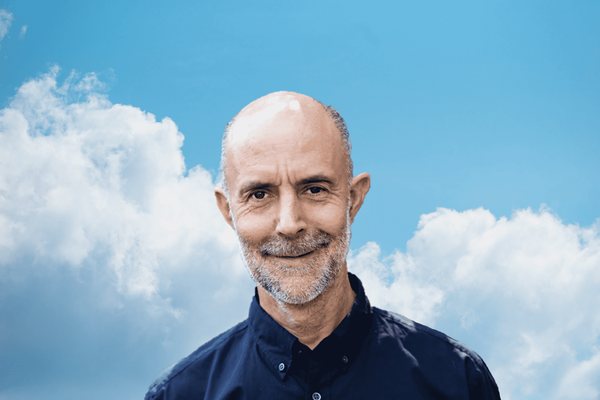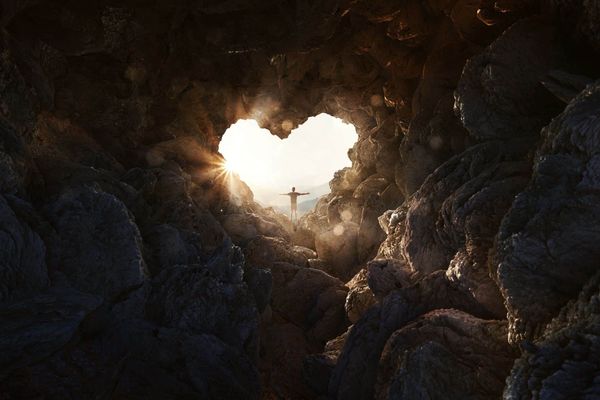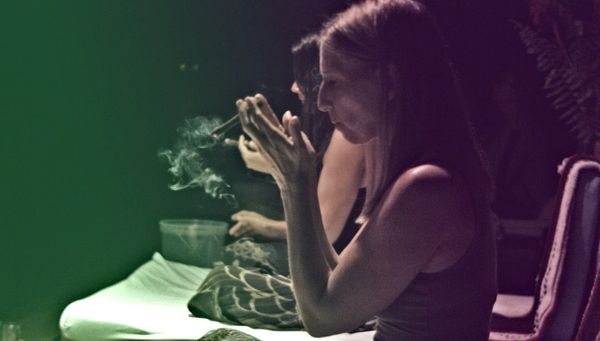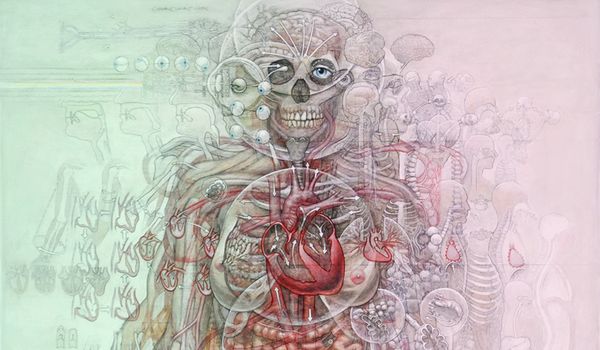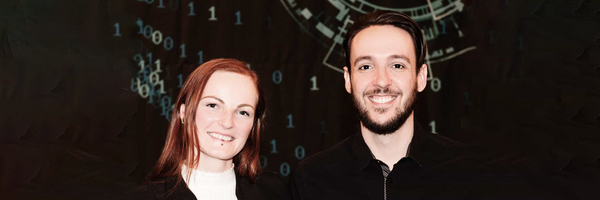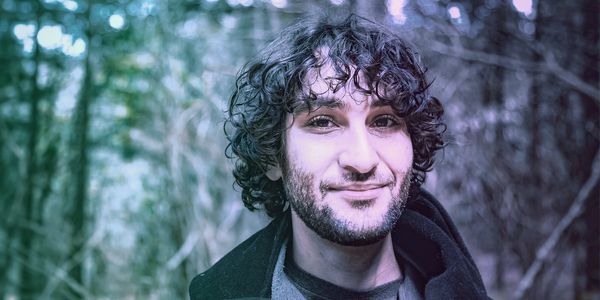Nikojive • • 15 min read
Finding Guidance on the Hero’s Journey: A Story of My Apprenticeship With “The Cacao Shaman”
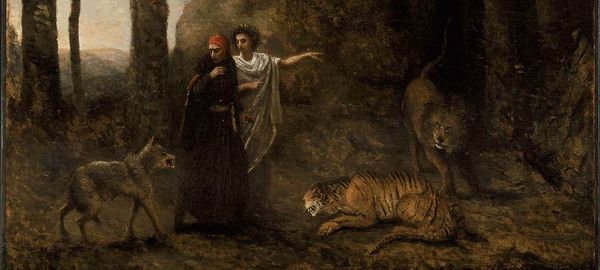
This is post 2 of 3 in the series “Hero's Journey”
Nikolaj Knub’s journey on the Hero’s Path.
- How I Embarked On A Slippery Hero’s Journey By Following My Bliss(ters)
- Finding Guidance on the Hero’s Journey: A Story of My Apprenticeship With “The Cacao Shaman”
- Entering the Caves of the Unconscious: A Story of Crossing the Threshold on the Hero’s Journey
In his grand opus The Hero With a Thousand Faces, legendary mythologist Joseph Campbell once outlined what he called “The Hero’s Journey”: An archetypal journey that Campbell found engraved in the blueprint of virtually all mythological traditions. The journey begins with what Campbell described as “the call to adventure.”: the event in which you become aware that a journey of discovery must be undertaken. But what comes after the initial “call”? How does the path look, once we respond to “the call” and decide to undertake the adventurous journey?
In the first part of my story I shared my reflections on, and experience of, “the call”. In my case “the call”, led me to buy a ticket to Guatemala. In this second part I want to describe where that ticket took me, and how I ended up engaged in some rather remarkable ceremonies with an old botanist called Keith – better and more affectionately known as “the cacao shaman from San Marcos.” I ask myself what role Keith, the cacao connoisseur, played in my adventure, and why I believe cacao should be regarded as an important shamanic tool.
Finally I try to unravel what seems a paradox to me: the sense that the “hero’s journey” is simultaneously a path of individuation – our own unique journey towards becoming who we are – as well as a process in which many of us will need help and guidance in order to walk the trail and find our way forward. Are these two elements mutually exclusive? Or can we trust and lean into the help, support, and guidance that we are offered, while still having the sense of “individuating”?
In order to explore these questions, I share the story of my journey to the land of cacao and my apprenticeship with a most peculiar guide: the “initiatory priest” of my cacao adventure.
Discovering the Shamanistic Use of Cacao
To begin with, you might wonder why I’m using “cacao” and “shaman” in the same sentence.
In fact, I had never heard of the shamanic use of cacao before I was introduced to the work of Keith “the cacao shaman” – and to be honest I was quite skeptical as to whether plain cacao could have any tangible effects. However, there is a long way from the cacao that we have been accustomed to buy in the supermarket, and then the cacao that I have come to know and love in Guatemala.
It is not your average Hershey-bar chocolate, but the raw, 100%-pure cacao which comes straight from the tree, and has not yet been subjected to the long and devastating process by which you go from cacao to chocolate. Nevertheless, when I was invited to my first cacao ceremony two years ago, I had no clue about the difference, but luckily, I had the curiosity to try it out, and… oh my!
I have experimented with a variety of psychedelics, but I still regard my first cacao ceremony as one of the most powerful experiences I have had with a so called “plant teacher.” The ever important “set and setting” were extremely ripe and right, and cacao proved to be a gentle, yet very profound teacher. From then on, the beautiful “cacao spirit” had my full attention, love, and reverence.
As I got to know more about cacao, I realized that it had been venerated as a sacred brew by the Maya and Aztecs, but that “she” had been discarded by a European aristocracy and clergy, who – as we know – sadly didn’t care much about “pagan superstition.” By the time cacao made her first journey across the Atlantic (mid-15th century), its use as a shamanic tool for healing had already begun to be forgotten. From then on she was shipped to Europe as a leisure drink, a commodity for the elite – and not as “heart blood,” as the Aztecs once poetically called her. Now, 500 years later, I decided to track cacao’s journey in the opposite direction, in order to discover its old use as a sacred brew.
Finding Support on the Road of Trials
After a long journey across the Atlantic, I found myself in the middle of what used to be the largest and most esteemed cacao terrain in Mesoamerica, “Xoconusco.” More precisely, I had come to Lago Atitlán, a pristine volcanic lake in the highlands of Guatemala, where Keith had his humble abode.

As many a “hero” before me, I began my journey by looking for support and guidance. I had come to “apprentice” with Keith and get more intimate with the beautiful plant teacher formally known as cacao theobroma. (the scientific nomenclature which was given to cacao by Linnaeus in the 17th century. Theobroma translates from latin as “food of the gods.”)
Whether it is in the form of an apprenticeship or not, the search for support is a crucial and often necessary step on “the hero’s journey” – one which we are familiar with from countless stories, myths, and folklore. Even though the journey will inevitably involve hardships and trials – demons to be fought and dragons to be slain – we can’t go rushing off, head over heels, straight into the heart of darkness.
Our inner hero has still much to learn, and we need to train and equip ourselves before we can approach darker territories. For “The powers of the abyss are not to be challenged lightly,” as Campbell warns us. After the initial “call to adventure,” the trail will therefore take us through some kind of preparatory stage: a gathering of all the support, physical as well as psychological, that we can get our hands on.
Often we read about the hero meeting with some kind of “protective figure” before he can venture further on the quest. This can be in the form of a wizard, a hermit, a wise shepherd, a smith etc. – someone who provides the hero with magic objects: healing amulets, a special sword, an armor that can’t be penetrated, or nourishment that will last for years.
In some mythologies, the protective figure will take the well-known form of a guide or a teacher: a ferryman who leads the hero across to the other shore, or an initiatory priest/ess who will invite us to participate in the mysteries. His/her help will be in the form of teachings, advice, and guidance. However, it seldom comes for free. The guide will test and try us; he will poke and surprise us. So even though the result will likely be helpful, it will not always be easy to determine what he is up to. As Campbell puts it:
“Protective and dangerous, motherly and fatherly at the same time, this supernatural principle of guardianship and direction unites in itself all the ambiguities of the unconscious – thus signifying the support of our conscious personality by that other, larger system [the unconscious], but also the inscrutability of the guide we are following, to the peril of all rational ends.”
As Campbell explains, “the guide” will often be a bit of an ambiguous character – a sort of a trickster who will rarely comply with what soothes our rational mind, but who will constantly seek to shatter our limited ways of thinking. He will push us out of our comfort zone in order to initiate us into the sacred.
The Quiet Gesture of a Tickle
I remember vividly the first cacao ceremony with Keith two years ago in Copenhagen. I had been invited by one of my friends and had no idea what it was, but for some reason I approached it in a quite serious manner. I remember sitting in my best meditation posture, back straight, and trying as hard as I could to meditate and concentrate on the effects of the cacao I had ingested earlier. When Keith came around in the circle, he sat down in front of me with a huge grin on his face. And then he simply began to tickle me. No words, just the quiet and simple gesture of a tickle. That was enough to burst the bubble of seriousness that I had created for myself.
For the first time in a long while, I had a good and thorough laugh at myself: one which came rolling from the depths of my being. Once it began, I couldn’t hold it back. My whole body started shaking and my stomach was in cramps, but I couldn’t help it. A wave of energy had overtaken my body, and I couldn’t do anything but to surrender. I had been so upright and so serious about myself that I had forgotten the simple joy of existence: I had forgotten how fun it is to be alive, and how much vitality there is, once we open ourselves to the playfulness of being a body. When I realized how much I had denied myself, and how harsh my inner environment had been, the tears from the laughter began to mix with those of grief and relief. Finally I could let go and loosen up. I began to let the life inside me flow more freely.
What Keith did for me that night was a prime example of what Joseph Campbell explains in the quote above. The gesture of tickling had no rational ends – it could not be seen as “useful” in the eyes of my calculative rationality – and yet it brought me in touch with something much deeper in myself: A sea of emotions, imagery and drives which had been repressed and silenced by the noisy and fearful worries of my rational mind. My attempt to plan and control had made me so uptight that I was in need of someone to help burst that bubble for me. And so Keith and the cacao-spirit showed up at the right time and demonstrated what Campbell called “…the inscrutability of the guide we are following, to the peril of all rational ends.”
Even though I’m immensely grateful for the small, but effective gesture of Keith, I cannot help but to question the role of the guide (“teacher,” “shaman,” “guru” – call it what you like) in general. For if we cannot hold the “guide” accountable for the scrutiny of our rational faculty, then how can we discern what is real support and what is just disempowering trickery? This is a question I would like to explore more in depth, while I tell the story about my experiences with keith, “the cacao shaman”.
A Hot Cup of Psychoactive Cacao
When I first began attending the ceremonies of Keith in Guatemala, I was quite mesmerized. Sitting on his porch at one of the most beautiful lakes in the world, surrounded by volcanoes, while sipping on a hot cup of psychoactive cacao. Who wouldn’t love that? Keith, in himself, also proved to be quite an intriguing experience. Loving, sensitive, exuberant and entertaining, he would easily capture the full attention of his crowd – sometimes up to 50 people crammed together on his small porch.
The ceremonial procedure was quite simple actually. You showed up on the porch. You got your cup of the magic 100% raw cacao, while Keith told his story about the way he began working with cacao. As he recounted it, he had a visit from the “cacao-spirit” many years ago, who told him to find out why, exactly, cacao had been so important to the ancients in Mesoamerica. The Olmecs, Toltecs, Maya and Aztec, all had revered cacao as something sacred. However, Keith couldn’t find anyone with answers to his questions and knew of no indigenous people, who still worked with cacao shamanistically. So he decided to begin exploring himself, and with time he began to facilitate ceremonies. initially only a small handful of travellers, but growing steadily with each year.
It can be quite a bitter experience, when you first ingest unadulterated cacao. Even though some prefer to leave it “uncorrupted,” many will add in some form of sweetener, together with a preferred choice of spice. Chili and cinnamon were old-time favorites amongst the Maya and Aztecs. Besides the flavor, chili increases the bioavailability of the active neurochemicals and thus accelerates the process by which cacao takes on its effects. “It heats things up,” as Keith used to say.
After 20-30 min. you will begin to feel the full impact of the cacao. One of the main effects is that it dilates your blood vessels and so the rate of your blood recirculation increases. Surely, cacao is not for the faint-hearted! It will make your heart pound harder and faster – so if you have trouble walking up the stairs, you might consider drinking a smaller dose.
What mainly causes the increased blood circulation is an alkaloid called theobromine (after cacao theobroma), which also has a stimulating effect on the nervous system. However, cacao has many active ingredients working together: anandamide, the so-called “bliss chemical” (ananda means bliss in sanskrit); tryptophan, which is critical to the production of serotonin; phenylethymine, which is released during sexual arousement and orgasm and is often dubbed “the love chemical,” as it helps create feelings of attraction, excitement, and euphoria. All in all, cacao has more than 300 compounds and is a very complex food, so the list could go on – forgive me for skipping it. If you want to read more on cacao, I can recommend Naked Chocolate.
Together, this combination of ingredients will facilitate more available oxygen in the brain, a heightened sense of awareness, a feeling of increased sensitivity, a slightly elevated heart rate, and a warm tingling sensation throughout your body.
In more subjective terms, I found the main quality of cacao to be the heart-opening quality that it can engender – not just physically, but emotionally. This is where I believe cacao has its real merits – as a partner/plant teacher that provides access to parts of our emotional life, which we tend to repress. However, If you want to stay in your rational mind, that is completely possible. As Keith often says: Cacao provides a door, but, in contrast to other psychedelics, it doesn’t push you through it. But if you are ripe and ready to release blocked emotions – as was my case with the tickle gesture – then cacao will lend you a helping hand and give you a gentle push.
In my view, cacao is not just a leisure drink or a “super food,” but a very valuable therapeutic tool, a medicine for the soul. This was how it was once used, and this is the role that I hope it can once again assume on a large cultural scale.
Projecting Our Power Away
Even though the cacao can be a powerful teacher in itself, the setting is of course of crucial importance. This is where Keith came in with his magic. Even though he certainly didn’t appear as a “spiritual teacher” – more as an old goofy hippie (which he also was) – it was clear to me that he was embodying something profoundly powerful. On ceremony days, he would go on and on – 6, 7, 8 hours straight – providing therapeutic support, and even though he was in his 60s, he came across as very youthful and energetic – sometimes even as a playful kid, full of cheekiness and joy. And most importantly, he always seemed to have a lot of fun doing his thing.
As you can probably already guess, my tendency to idolize Keith was unmistakable. When I first began attending ceremonies, I would sometimes feel a strange sort of reverence toward him, like I was a small boy searching for validation from a father. And when we talked, I could sometimes feel myself getting a bit nervous and overtly self-conscious, internally pondering, ‘What does he think of me now…?’ ‘Am I doing good or not?’
Even though relating to a teacher can be of tremendous help, this is of course where it can become a tricky business. What makes it so problematic is that we often tend to invest the teacher with too much power – a power which is actually our own, but which we have transferred, or “projected”, onto the teacher. In Jungian terms, what we are giving away is actually the power of “the Self” – thus allowing others to have that power over us.
This is not necessarily problematic. If the teacher is skillful and conscious about the process, projection can be a valuable – and in some cases, inevitable – step on the way to “owning up” to our own power. Nonetheless if the teacher that we imbue with these qualities hasn’t done his own work, we risk being manipulated and abused. Such abuse will often be generated because the “teacher” longs for, and actually enjoys, the seduction of his student’s projections. If he has any narcissistic remnants left, he will be in danger of misusing the trust that he receives.
Try Not to Get Too Serious About It
In some sense, we need to live with a paradox when we relate to a teacher. On one hand, they can be vehicles for something primordial, powerful, and sacred to flow forth, and yet they are – thank god – not divine beings, but just humans who are completely fallible and susceptible to all kinds of subtle temptations. When we recognize the human fallibility of the teacher, a sense of disillusionment can easily kick in, but this is a necessary step if we want the relation to evolve further.
A skilled teacher will encourage a process of disillusionment – or better: try to make sure that too much illusion doesn’t occur in the first place. He will want you to develop your own experience of guidance and mastery – even if this means letting go of you as student. Obviously, what matters to him is not how big his crowd of students is, or how much he makes per month, but how to make you as strong and free as possible.
One of the things I found helpful in this process with Keith was that he was never too serious about himself or his work. The first evening when I helped with some practical things after a ceremony, Keith called me over to the computer, as if to show me something very important. When I came over, he was surfing YouTube and had stumbled over “Reggae Shark,” which he just had to show me.
(Check it out for a good laugh… https://www.youtube.com/watch?v=A3ytTKZf344)
In a way, “Reggae Shark” helped to take the lid off all the energy I had invested in Keith, and although I was a bit “disillusioned,” it led to a more relaxed and natural way of relating. No need to make things too “holy, holy.” When things gets too serious, it’s often a sign that some amount of projection is occurring.
Underneath the Drama
From the beginning, Keith made sure to explain that he had no fixed teaching to preach or doctrine to sell, but in his own words he shared “…a do-it-yourself process of getting out of your own way so more of the magic you already are can wake up, be recognized, and play… without the drama, scripts, and stories that can so limit and color it .”
He didn’t particularly interfere with the processes people were going through, but he preferred to “hold space” – as it’s called in the jargon. This might sound “wishy-washy”, but there is a good reason why he didn’t interfere too much. As he explained himself, the attitude of fixing can be awfully disempowering. Keith was not interested in removing the emotional pain from people. He did not want to take away the symptoms. On the contrary, he welcomed them as precious signposts telling us where to dig for gold. “If you can’t feel it, you can’t heal it”, as he enjoyed announcing to his porch full of people.
This is where cacao came into the picture as a great therapeutic tool. By increasing our sensitivity, it brings emotions to the surface, so that we get a chance to look at them and make friends with them.
In that way we gradually learn how to dance with our emotions – instead of constantly fighting a constrictive inner war. Less drama, trauma, pain, struggle, and more fun and play! If we just have the courage to embrace our emotional life – instead of fighting it – we will likely discover that underneath all the drama and the pain, our “treasure hard to attain” lies buried.
The Gift of Finding Our Own Way
Keith knew that it was not his business to take away my symptoms or to hold my hand. He and the cacao spirit did not push me in a certain direction, but they assisted me in finding my own path and helped me to become a lighter and freer wanderer. And that is so much more valuable than having the road paved out for us. Good guidance can be precious and precise, but we should never let anyone rob from us the priceless gift that comes with human existence – the endowment of finding our own unique path in life.
If we keep projecting our own power onto the teacher, we will never be able to walk the path ourselves. But once we begin to draw the projection back – once we start to “own up” to our power – then we can begin to really place trust in ourselves and our own experience. We then become authorities unto ourselves, thus assuming greater responsibility for our own path, as we learn to discern between our emotional confusion and our deep inner wisdom and intuitive knowing.
This requires that we accept the fact that we will make mistakes on the road, and that we learn to approach all our weird detours with a sense of compassion. For the journey will never be as straight and forward as we would like. The important thing is that we dare to walk it: that we dare to venture out into the unknown and take the journey upon us.
As Nietzsche so eloquently advised us in his early work “Schopenhauer As Educator”:
No one can build you the bridge on which you, and only you, must cross the river of life. There may be countless trails and bridges and demigods who would gladly carry you across; but only at the price of pawning and forgoing yourself. There is one path in the world that none can walk but you. Where does it lead? Don’t ask, walk!
Equipped with playful perspectives and a bag full of magic cacao, I said farewell to Keith – my adventure’s “initiatory priest” – and to the small village of San Marcos la Laguna. As I drove away over the mountain range, I looked down upon the volcanic lake, which glittered in the sun, and seemed to smile at me one last time, before the bus turned the corner. After a month with Keith and the cacao, I felt relieved of all the unnecessary baggage that I had carried with me to San Marcos. I had let myself become lighter at Keith’s. High-spirited, I was now leaving the highlands of Guatemala and turning toward a more dense, muddy, and tropical lowland. I was ready to roam darker territories.
Part three coming soon. Stay tuned, and follow us on Facebook and Twitter or subscribe via email.

